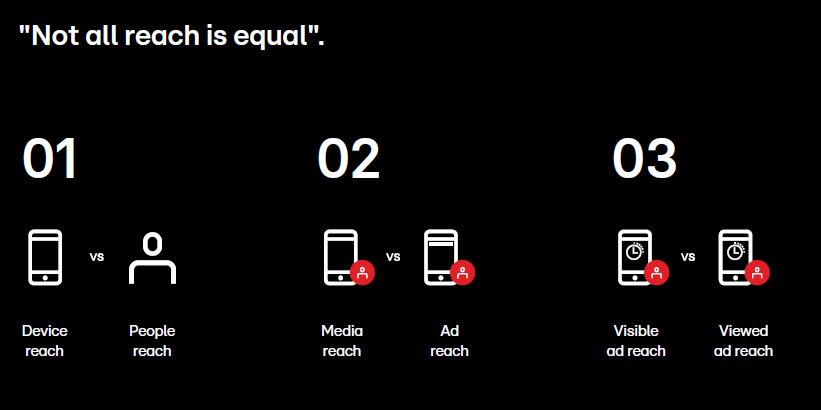The value of connection

During this year’s Cannes Lions, RTL AdAlliance invited renowned researcher Karen Nelson-Field to join a panel discussion on the value of connection. In this article, we highlight some of the major insights she provided.
The importance of attention
During her time working on a research PhD in audience measurement, Karen recognised that ad fraud, mistrust and cookie deletion meant that there was a perfect storm brewing. While she was still at university, a couple of very large FMCG clients raised their concerns about the fact that viewability was disappearing. Was there something that could replace this measurement, or that could be ubiquitous? Another measurement that could translate, and transfer the missing void left by viewability?
Media measurement stumbled across the concept that engagement is what people are striving for. But what does that mean? Karen was convinced that engagement is outward facing. In her opinion, the best way to measure engagement would be to film people during their media interaction. This means concentrating on human behaviour and comparing it with the data that is measured by the device itself. This was before Gaze was in the picture. The study of human interaction was the way forward for her research.
Brands and agencies need to pay attention to attention
When looking at digital measurement we see that it uses inward-facing tools, or device data, because these are scalable; information such as how long the ad has been shown on the screen, whether the sound was on when played, have people scrolled and after how many seconds. But Karen noticed that this data fails to look outward at the human. Meaning, if someone scrolls by an ad, they are not necessarily looking at it – they could be talking to a friend instead or are just scrolling to ensure that the screen does not go dark. This shows that there is a big gap between measures such as viewability and actual human attention. She mentioned that every time her company collects data, about 70% of MRC-compliant impressions get zero attention
Karen is sure that attention is not something that is going to replace these measures anytime soon, because they are scalable. Because the two work together, one needs to have an impression served, which is a viewability metric for attention to be gained. But it does not necessarily work the other way. Attention and viewability are vastly different.
Individual measurement versus scalable data
Karen has been in business for five years, the first three years of which she spent validating that attention was a valuable metric. What happens if a brand does capture viewability but not attention? It will decline. The important difference between viewability and attention is that the metrics move differently.
Within this conversation, scalability is another big topic. Can attention be a scalable metric? When she started discussing this question, people kept insisting that they were individuals and unique. However, she shared with us that it is quite surprising how many mathematical norms influence the way people view their content and the reason why they are seeing exactly what they are seeing, based on their viewing behaviour. She put it simply, each format has its little recipe that functionally defines how you will look at its content. Therefore, it is not ubiquitous.
Demographics do behave differently in different formats, but similar patterns can be seen or identified, according to the expert. She gave the example of the classification of youth and how much attention they pay to digital, which is generalisable across the country. Karen said that she and her team have collected hundreds of thousands of views, and once you start to see generalisable patterns, she knows that she can predict against them, which is where her research is heading.
Attention is not something that is going to replace these measures anytime soon
The process of measuring attention
“We use this concept of computer vision. With it, we can measure attention through any device. Our technology has access to 155 million people around the world while being strictly GDPR compliant.
As a company, we can ask: “Hey, next time you are on Facebook, would you like to earn $10?” or something along those lines. If you say yes, and agree to download our app, it permits us to turn your camera on. Then, we ethically film you while you use your phone. We record and translate the collected data into attention metrics.
For example, we can answer if you are looking at the ad, which is active attention or if you are looking at the content, which is passive attention, or we can see if you are not looking at all at what we want you to.”
How attention can be used in the day-to-day of media agencies
Vast amounts of data are valuable. Nelson-Field and her team sell API data to agencies to normalise. What she means by normalising is that an impression of a certain platform is different from the impression from another platform – yet one only pays for an impression in general. Not all reach is equal, which can be seen in the data. Their data simply normalises the inequity, meaning that agencies are using it largely in planning tools where it normalises their reach and frequency curves. It levels the playing field on which output it performs best.
Each impression has its individual value. There is a level of performance one needs from the media, as one must be able to nudge and remind and refresh. One also need media to build a brand, which is a different piece to your strategy. What it comes down to is quality – you are looking for quality content in quality formats because they have fewer interruptions, less clutter, no scrolling, or are shown with good quality programming.

The right ad environment to maximise attention
First, it needs to be specified that content is a personal thing, what makes one individual laugh will not necessarily make another laugh. Generally speaking, good content has relevance, has high engagement, evokes an emotional response, is surprising – it is all these things. And it also has good production formats and provides information. Looking at her data, we see quite different genres and different programmes within the list of what is deemed as “good content”. On TV this is not necessarily just high rating content, because quite often, ratings are not fully related to attention, they do drive it though.
Without a doubt, highly emotive ads drive extra attention, but that is quite hard to generalise. A good ad is an ad that brings someone straight to your brand, then it is well-branded. There are two sides to this: first, the creative objective, and second, ensuring that your ads are distinctively yours. Then there is the emotive side of things, which is a combination of the two.
The next phase
“The last couple of years have been about teaching people that there is an alternative measurement that can help them supplement their existing measures. The next phase – which I am calling version two, is where we are understanding deeper individual levels of human behaviour and how you can transact against it. This is important to me, as is the industry, and I do not want to build proxy measures that do not work, which is why we do a lot of research around individuals. We are looking at different formats and platforms to find out if one could potentially pre-target and predict against them. This is where I am headed personally.”
Karen Nelson-Field, CEO at Amplified Intelligence